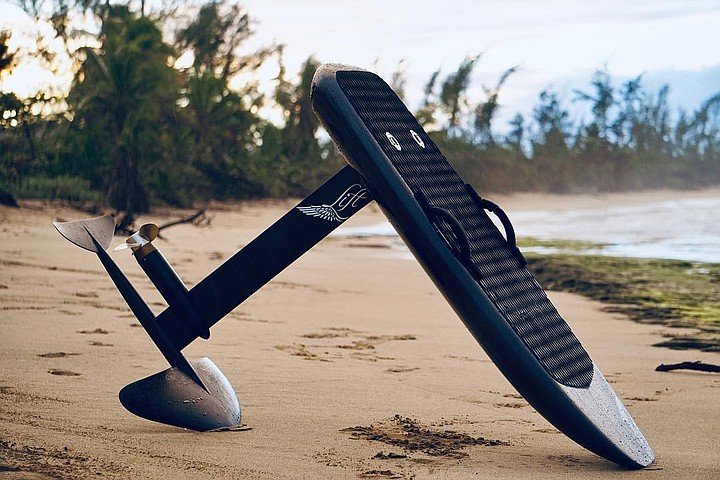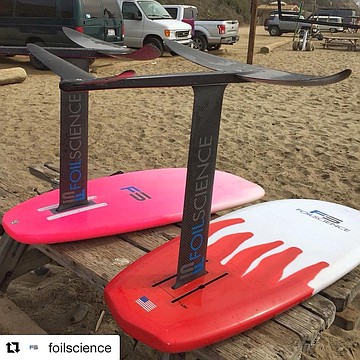 Facebook
Facebook
 X
X
 Instagram
Instagram
 TikTok
TikTok
 Youtube
Youtube

One of the hottest products showcased at the January Consumer Electronic Show in Las Vegas was the e-Foil board. These boards have electric motor powered hydrofoils underneath them, which lift the rider above water once traveling at a certain speed.
“The last foil I flew on was the Lift Foil in Los Angeles,” said Chuck Glynn of Encinitas, “and the other e-Foil I have been on was the Flite Board last summer in Sicily.”

Glynn is a stand-up paddle board racer and expert non-electric-hydrofoil rider with ten years of experience. “The [e-Foil boards] run from $10,000 to $12,500, and up to $4,500 for an additional battery,” he explained.
“It’s quite an investment at this point in the market.”
e-Foil boards are controlled via a handheld unit. “The learning curve on these foils is pretty steep. But the beauty of the electric foil is that you can control the boards top speed with the controllers, and as you gain more confidence you can slowly progress into flight by limiting the power of the motor.”

e-Foil prototypes have been surfacing online since 2017, but I had a difficult time locating one actually ridden in San Diego County waters.
Glynn continued, “one big issue that e-Foil manufacturers are having is creating enough thrust from the motor to overcome the drag of the board to get up into flight.”

“The other hurdle is the wireless communication between the controller to the receiver in the boards. If the board submerges, it will [sometimes] loose connection and cut out, usually resulting in a crash… there is still much more room to perfect these units.”
For now, Glynn’s Foil Science company offers tutorials to help newbies learn how to ride on non-electric powered foil boards that they design and sell.


One of the hottest products showcased at the January Consumer Electronic Show in Las Vegas was the e-Foil board. These boards have electric motor powered hydrofoils underneath them, which lift the rider above water once traveling at a certain speed.
“The last foil I flew on was the Lift Foil in Los Angeles,” said Chuck Glynn of Encinitas, “and the other e-Foil I have been on was the Flite Board last summer in Sicily.”

Glynn is a stand-up paddle board racer and expert non-electric-hydrofoil rider with ten years of experience. “The [e-Foil boards] run from $10,000 to $12,500, and up to $4,500 for an additional battery,” he explained.
“It’s quite an investment at this point in the market.”
e-Foil boards are controlled via a handheld unit. “The learning curve on these foils is pretty steep. But the beauty of the electric foil is that you can control the boards top speed with the controllers, and as you gain more confidence you can slowly progress into flight by limiting the power of the motor.”

e-Foil prototypes have been surfacing online since 2017, but I had a difficult time locating one actually ridden in San Diego County waters.
Glynn continued, “one big issue that e-Foil manufacturers are having is creating enough thrust from the motor to overcome the drag of the board to get up into flight.”

“The other hurdle is the wireless communication between the controller to the receiver in the boards. If the board submerges, it will [sometimes] loose connection and cut out, usually resulting in a crash… there is still much more room to perfect these units.”
For now, Glynn’s Foil Science company offers tutorials to help newbies learn how to ride on non-electric powered foil boards that they design and sell.
Comments